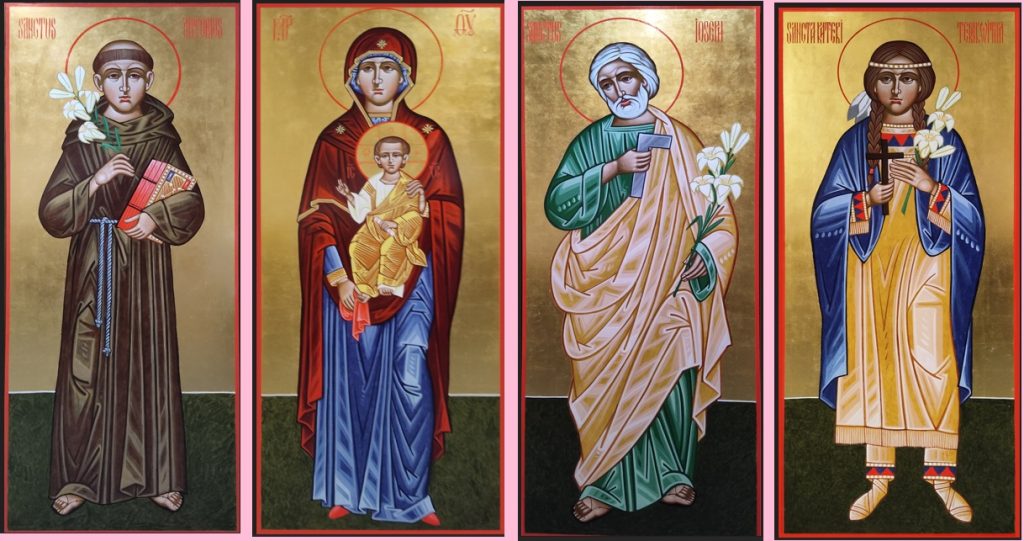Our Icons
Icons are considered an essential part of the Catholic Church. They are given special liturgical veneration; are usually painted by monks; and are often thought to have been divinity inspired. They frequently repeat the same subject matter and are rendered in the same style.
The original aim of a monastic artist was to remove any sense of individuality to the claim that icons were not made by human hands; They are. Although the religious painting can be termed as an icon, the painting that we generally considered to be “proper” icons were usually painted on wood.
The wood has been covered in coarse canvas, which was treated with “gesso” plaster of Paris mixed with fine chalk or powdered alabaster (a variety of gypsum, of fine texture, usually white and translucent, but sometimes yellow, red or grey. A line drawing is then transferred to the ground or incised with a needle, and any gold necessary for the halos or the background is gilded; real gold is usually used. The sacred image is then painted in earth tones of natural minerals, the darker the colours added first and the lighter colours and detailing The natural minerals give transparency, and the white ground reflects the light back through the layers of tempera, creating the effect of luminosity in the icon. Once fully dried, the icons are coated in a varnish such as olipha (a mixture of linseed oil and stand oil).
For their subject matter, icons traditionally concentrate on a limited number of subjects. The earliest icons show only Christ, the Virgin Mary, and the leading apostles. The colours used in creating an icon are very relevant indeed. For example. Gold represents the radiance of Heaven; red, divine life; blue is the colour of human life; and white is the Uncreated Light of God, only used for resurrection and transfiguration of Christ.
Techniques and methods on creating icons evolved. In the 20th century icons created were done with these techniques. All icons are painted in the utmost atmosphere of prayer, contemplative state. Many icons are mesmerizing as you look at them. They have a significant spirituality and mystery about them. You seem to be led into a spiritual experience as you contemplate an icon. They speak to each individual who sets eyes on them.
Each one depicts the history of our belief in the Church. As you enter the Cathedral your eyes are drawn to the four icons located in the sanctuary. Take the time to contemplate, meditate with these icons. Pick the one you are most drawn too. Use it as a tool to help you find your most inner spirituality and to develop even more your belief in our Lord. They are blessings of insight given to us by God!
